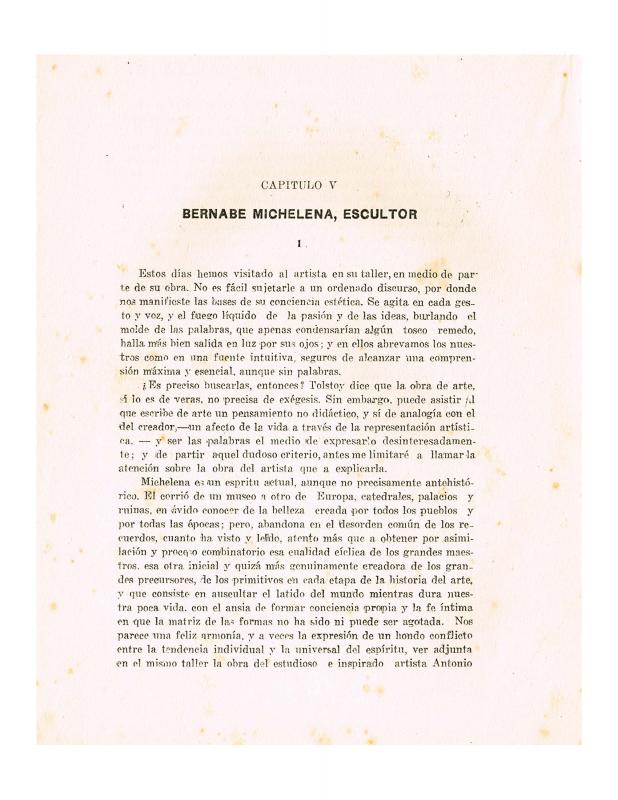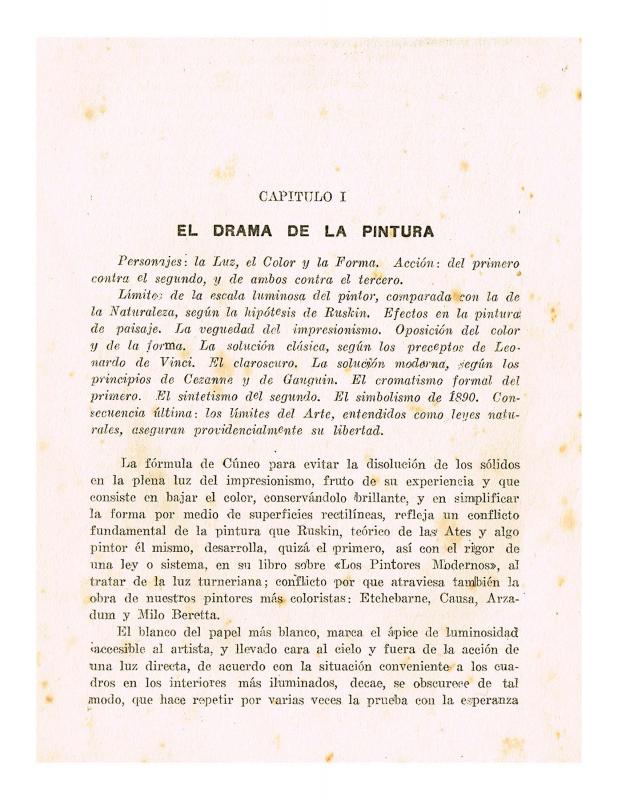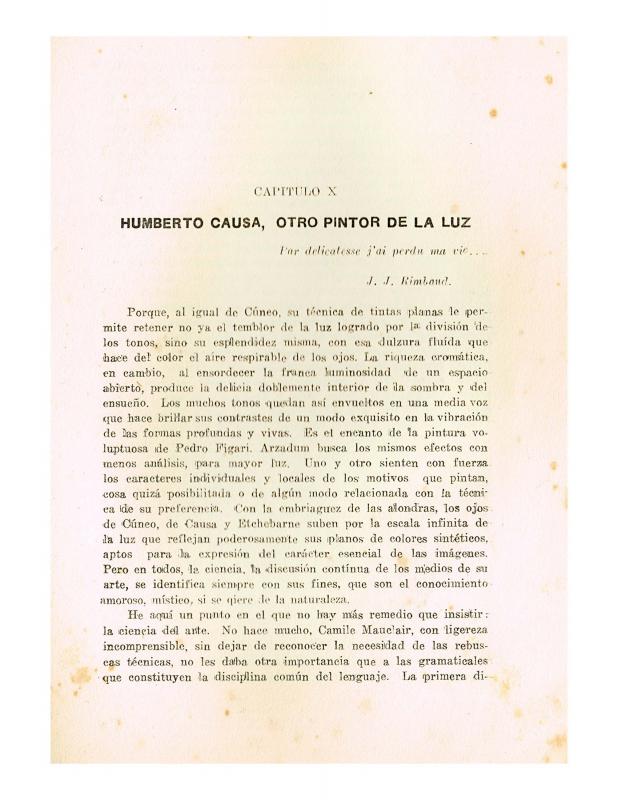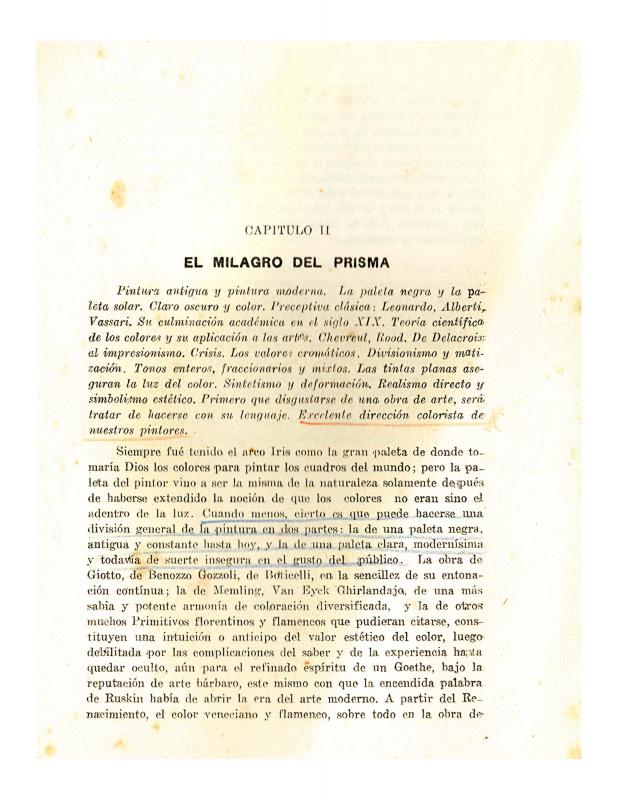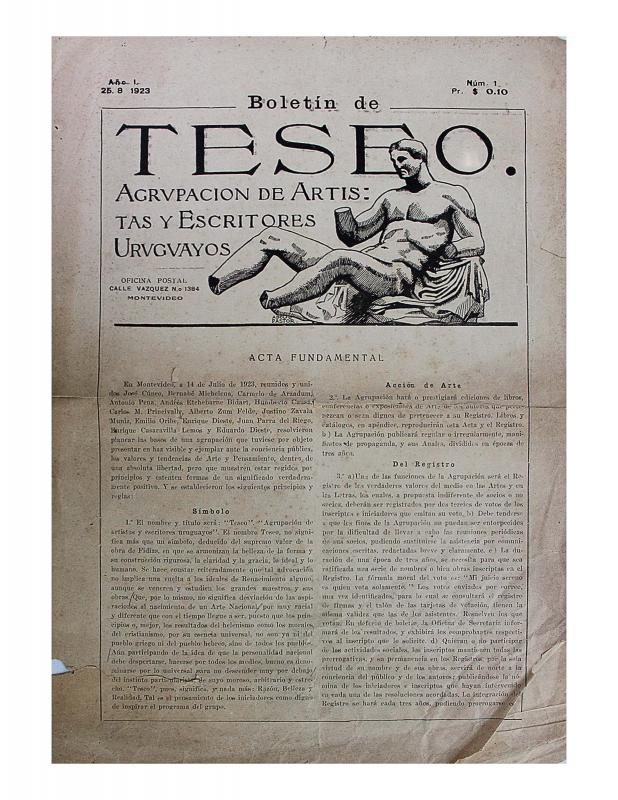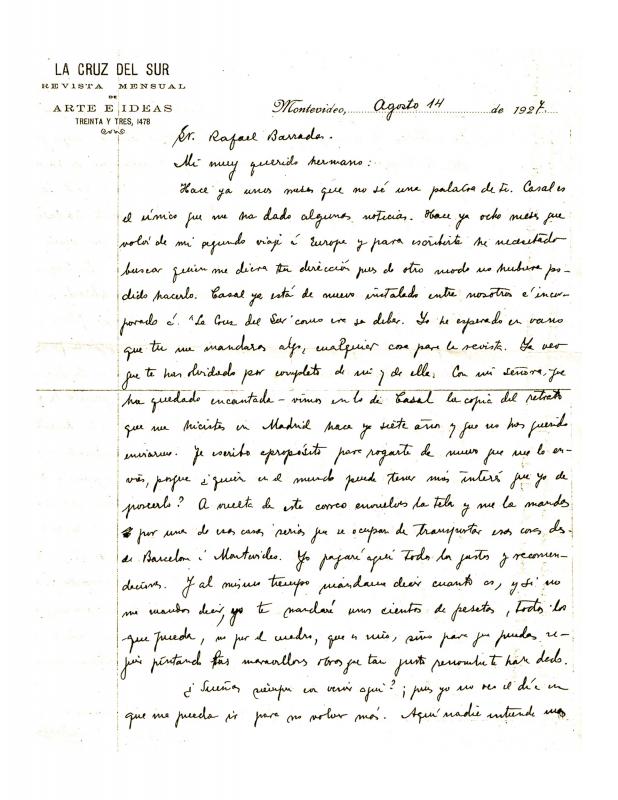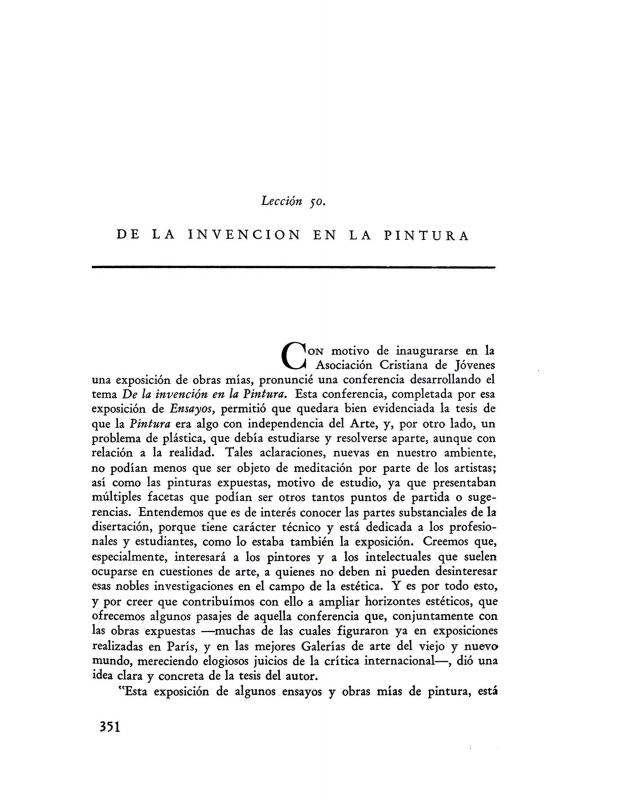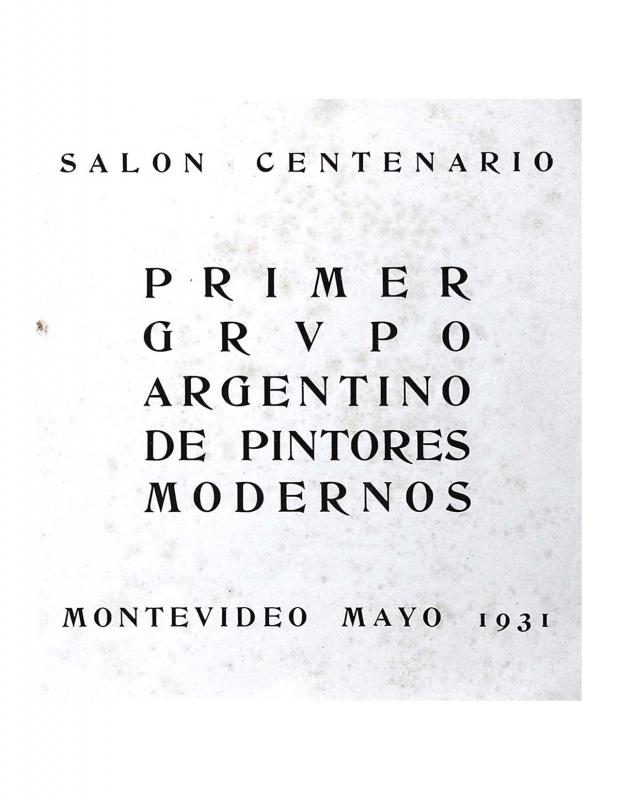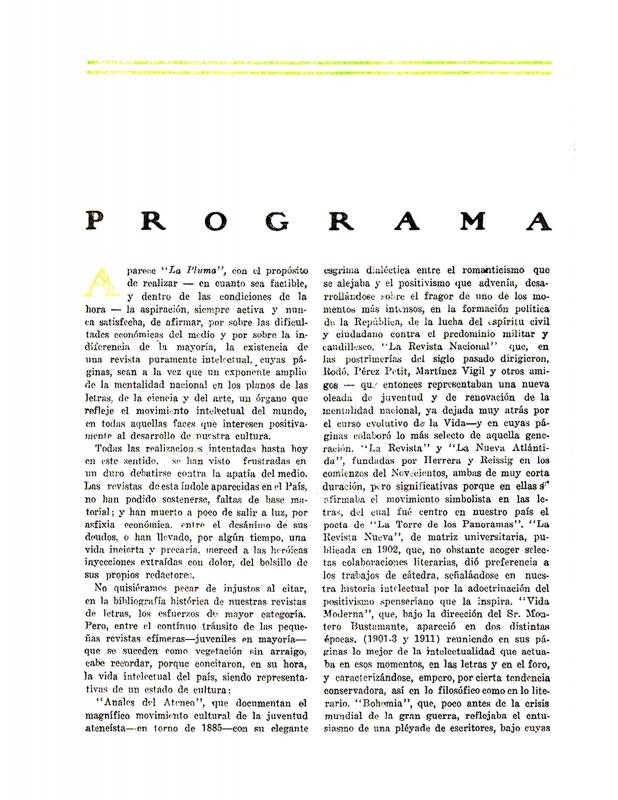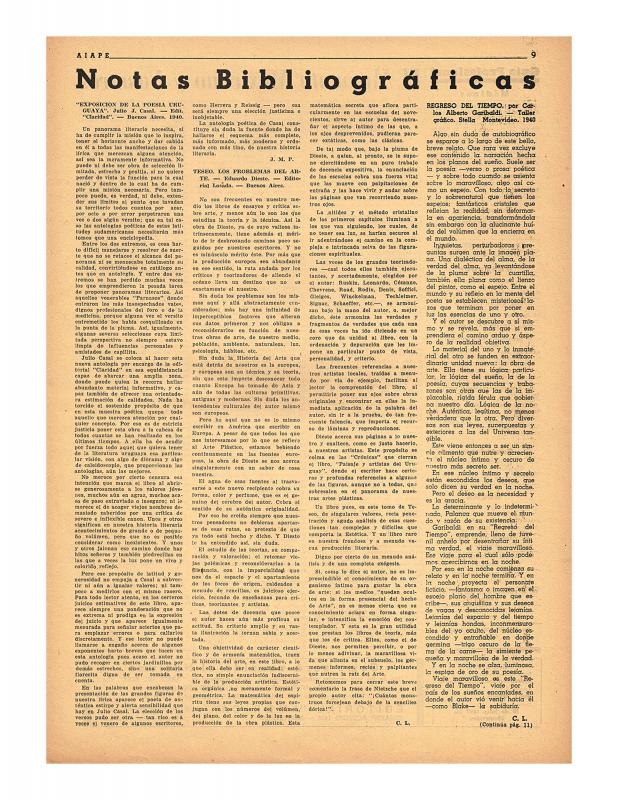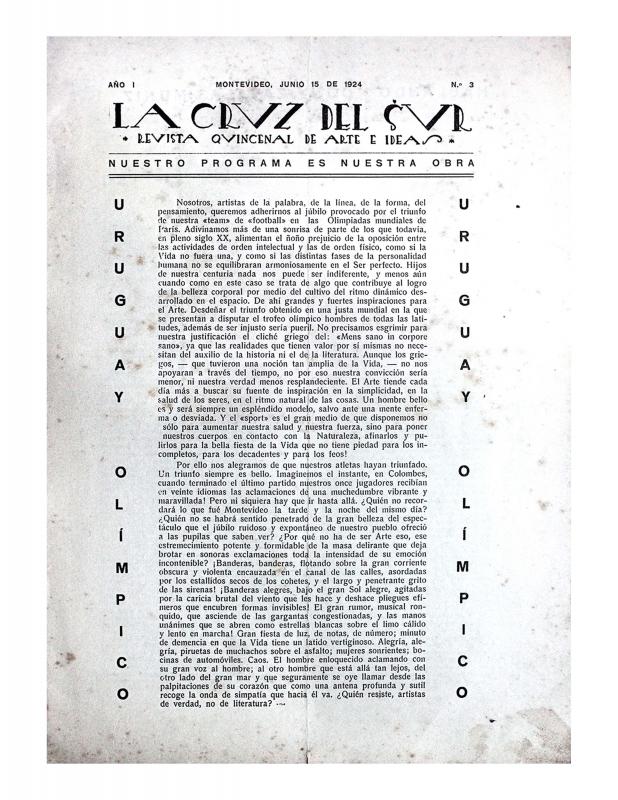Founded in 1923, under the direction of the writer Eduardo Dieste (1881−1954), the association Teseo was a group of Uruguayan artists and writers that exerted notable influence in the local Montevideo circles at the time. The director played a significant role as producer and disseminator of ideas about the visual arts in Uruguay during that decade of the twenties. The publication by Teseo was intended to diffuse aspects that involve and affirm traditional theoretical traditions of leading European thinkers who had a contemporary view of Uruguay. The book Teseo:Discusión Estética y Ejemplos in which Eduardo Dieste compiles the articles he wrote for the homonymous publication bulletin, was significant in disseminating ideas and knowledge covering an extensive historical overview of European art, philosophers, and critics. The reflections on the “history of art” attempt to locate comparisons within the genre of Uruguayan art. However, the hybridism of the analysis between the American style of regionalist views derived from rooted homegrown doctrines and European ideologies that aroused special interest. After elaborating on permanent concerns relating to art—light, color, and form, Dieste then focused his attention on various Uruguayan artists, particularly, José Cuneo (1887−1977), whom he systematically cited as an outstanding example. The chapter selected for this document, while briefly addressing the theme of portraiture, primarily focused on the genre of landscape that was of special interest to Cuneo from the beginning of twentieth century. Dieste established unparalleled comparisons between Cuneo’s landscape work and the great European artistic landscape tradition, ranging from the work of the British John Constable (1776−1837), to the French artists Camille Corot (1796−1875), Julien Dupré (1851−1910), Jean Millet (1814−1875), and Jean Vuillard (1868−1940). All of them were artists referenced on the list of landscape painters with diverse aesthetic techniques, such as romantic, realist, impressionistic, Fauvist, and including “landscape syncretism,” according to Dieste’s denomination. Cuneo's concern with landscape art stands out for his ability to situate himself in the most typical place in the environment, and share it’s most vital and organic elements. The author recognizes in the Uruguayan artist his ability to interpret the variants of flora and climate, such as colors of droughts, the natural quietude of a summer midday, and the behavior of trees in the Uruguayan countryside that emerge as islets. This critical look at Cuneo’s work impregnated with a homegrown love by Dieste also consisted of well-known intellectual sources native to Europe. [For further reading, please refer to the ICAA digital archive for the following texts published by Teseo (la Agrupación de Artistas y Escritores Uruguayos [The Unión of Uruguayan Artists and Writers]) and by Eduardo Dieste himself: “Bernabé Michelena, escultor” (doc. no. 1220780), “El Drama de la Pintura, Teseo, Discusión estética y ejemplos” (doc. no. 1217147), “Humberto Causa, otro pintor de la luz” (doc. no. 1221130), and “El Milagro del Prisma [Teseo Discusión Estética y ejemplos]” (doc. no. 1217097). Also see: “Boletín de TESEO [Agrupación de Artistas y Escritores Uruguayos],” by José Cuneo, Bernabé Michelena, et. al. (doc. no. 1182637), “Carta a Rafael Barradas” (doc. no. 1250919), “De la invención en la pintura” (doc. no. 1245854), “Escuela Taller de Artes Plásticas al Ministro de Instrucción Pública [carta institucional en borrador],” by the ETAP (Escuela Taller de Artes Plásticas/School/Workshop in the Visual Arts) (doc. no. 1265434), “Primer Grupo Argentino de Pintores Modernos” (doc. no. 1228165) and “Programa,” by Alberto Zum Felde (doc. no. 1196932), “Teseo: Los Problemas del Arte,” by C.L. (doc. no. 1223765) and “Uruguay Olímpico,” by Alberto Lasplaces (doc. no. 1254039)].

